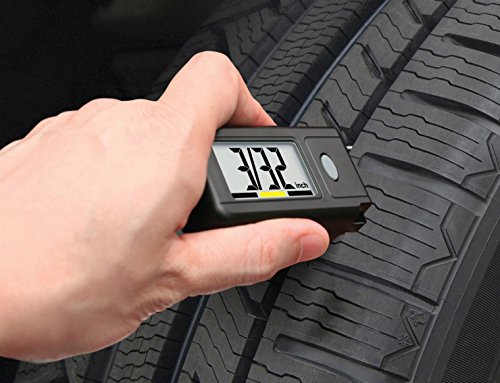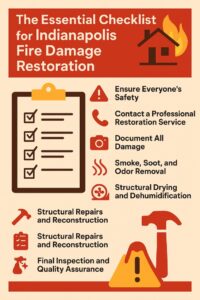Improving fuel efficiency is essential for vehicle owners. Rising gas prices and environmental concerns make efficient driving more important than ever. A simple way to boost fuel efficiency is through regular checks of your tire tread using a tire tread reader. Monitoring tire tread depth helps reduce fuel consumption, extends tire life, and enhances vehicle performance overall.
Why Tire Tread Matters for Fuel Efficiency
The grooved pattern on your tire surface is known as the tread. This pattern provides traction, disperses water, and maintains vehicle stability. When tread wears down, the tire’s grip weakens, causing the engine to work harder to maintain speed and control, resulting in higher fuel consumption. Regularly using a tire tread reader helps you detect early signs of tread wear, ensuring your tires remain efficient and safe.
How a Tire Tread Reader Works
A tire tread reader is a tool used to measure tire tread depth accurately. It helps you know when it’s time to replace tires or take action to improve efficiency.
Digital vs. Manual Readers: Digital readers provide precise measurements displayed on a small screen. Manual readers, often resembling a gauge, require interpretation but are convenient for quick checks.
User-Friendly Design: Tire tread readers are simple and accessible for vehicle owners, making it easy to track tire health without professional help.
Reliable Accuracy: Using a tread reader gives you accurate measurements, preventing premature tire replacements and supporting consistent fuel efficiency.
Benefits of Regular Tire Tread Reader Checks
Consistently using a tire tread reader offers many advantages, especially for fuel efficiency.
- Improved Traction for Less Energy Use: Well-maintained tread provides ideal traction, reducing rolling resistance and requiring less energy to keep moving.
- Extended Tire Lifespan: Early detection of uneven wear helps you rotate or align tires, extending their lifespan.
- Lower Risk of Tire-Related Issues: Regular checks reduce the chance of blowouts or punctures, which can lead to emergency fuel use.
The Role of Tread Depth in Fuel Efficiency
Tread depth, typically measured in millimeters or inches, is key to how tires interact with the road. Low tread depth increases road resistance, leading to higher fuel consumption.
Optimal Tread Depth: Tread depth should be above 4/32 inches for safe, efficient driving. Below this depth, fuel efficiency decreases as the tire’s road grip weakens.
Impact on Rolling Resistance: As tread wears, rolling resistance increases, making the engine consume more fuel.
How to Check Tire Tread Using a Tire Tread Reader
Checking your tire tread with a tread reader is easy and requires just a few steps.
Select a Suitable Tread Reader: Choose either a digital or manual reader, depending on your needs.
Measure Multiple Points: Check several parts of the tread to detect uneven wear. If depth varies across the tire, consider rotation or alignment.
Interpret the Reading: For digital readers, a direct measurement will display. If depth is below the recommended level (typically 2/32 inches), replacement is advised for efficiency and safety.
Importance of Tire Pressure with Tread Depth
Tire pressure is closely related to tread depth. Underinflated tires wear unevenly, which impacts fuel efficiency.
Checking Tread and Pressure Together: Use a tread reader along with a tire pressure gauge. Ensuring both are optimal maintains efficiency.
Effect of Underinflation on Fuel Use: Underinflated tires increase rolling resistance, making the engine work harder, which increases fuel consumption. Checking both tread depth and pressure provides better insight into tire health.
Frequency of Using a Tire Tread Reader
Consistent tread checks are essential to maintain fuel efficiency. Ideally, check tread every few months or before long trips.
Routine Check Every 3 Months: Regular tread checks let you monitor wear and make necessary adjustments like rotation.
Seasonal Changes: Checking tread before and after extreme seasons helps maximize efficiency, as weather affects tread wear.
If Performance Drops: If traction decreases or fuel use rises, a tread check may reveal early wear signs.
Extra Tips for Fuel Efficiency Through Tire Maintenance
In addition to tread checks, other tire maintenance practices can help fuel efficiency.
Regular Tire Rotation: Rotating tires prevents uneven wear, reducing rolling resistance and fuel consumption.
Wheel Alignment: Misaligned wheels cause uneven wear, impacting traction and efficiency. Regular alignment checks maintain tread integrity.
Timely Tire Replacement: Tires with tread under 2/32 inches are unsafe and inefficient. Replacing tires at this stage prevents excess fuel use.
Environmental and Cost Benefits of Tire Tread Reader Use
Using a tire tread reader can reduce fuel expenses and lower environmental impact, as efficient tires use less energy.
Lower Fuel Costs: Maintaining tread at optimal levels minimizes fuel use, saving you money over time.
Reduced CO2 Emissions: Efficient vehicles emit fewer greenhouse gases. Monitoring tread depth supports overall emission reduction.
Fewer Tire Replacements: Monitoring tread helps extend tire life, resulting in fewer tires in landfills.
Debunking Common Myths About Tread and Fuel Efficiency
Many misconceptions exist about tread and fuel efficiency. Here are a few common myths clarified:
New Tires Always Improve Efficiency: New tires aren’t always more efficient without proper maintenance. Regular checks remain essential for lasting fuel efficiency.
All Treads Are the Same: Different treads affect fuel efficiency. Choosing fuel-efficient tires and checking tread depth regularly is important.
One-Time Checks Are Enough: Tread wear is ongoing, making regular monitoring essential for consistent fuel efficiency.
Conclusion
Regular tire tread checks with a reader are a simple, effective way to improve fuel efficiency, extend tire life, and reduce environmental impact. By checking tread frequently, you ensure good traction, which means the engine uses less fuel and provides a smoother ride. Combined with other tire maintenance, like rotation and alignment, tread checks help maximize both safety and efficiency.By using a tire tread reader, you’re investing in your vehicle’s performance and helping to protect the environment.









